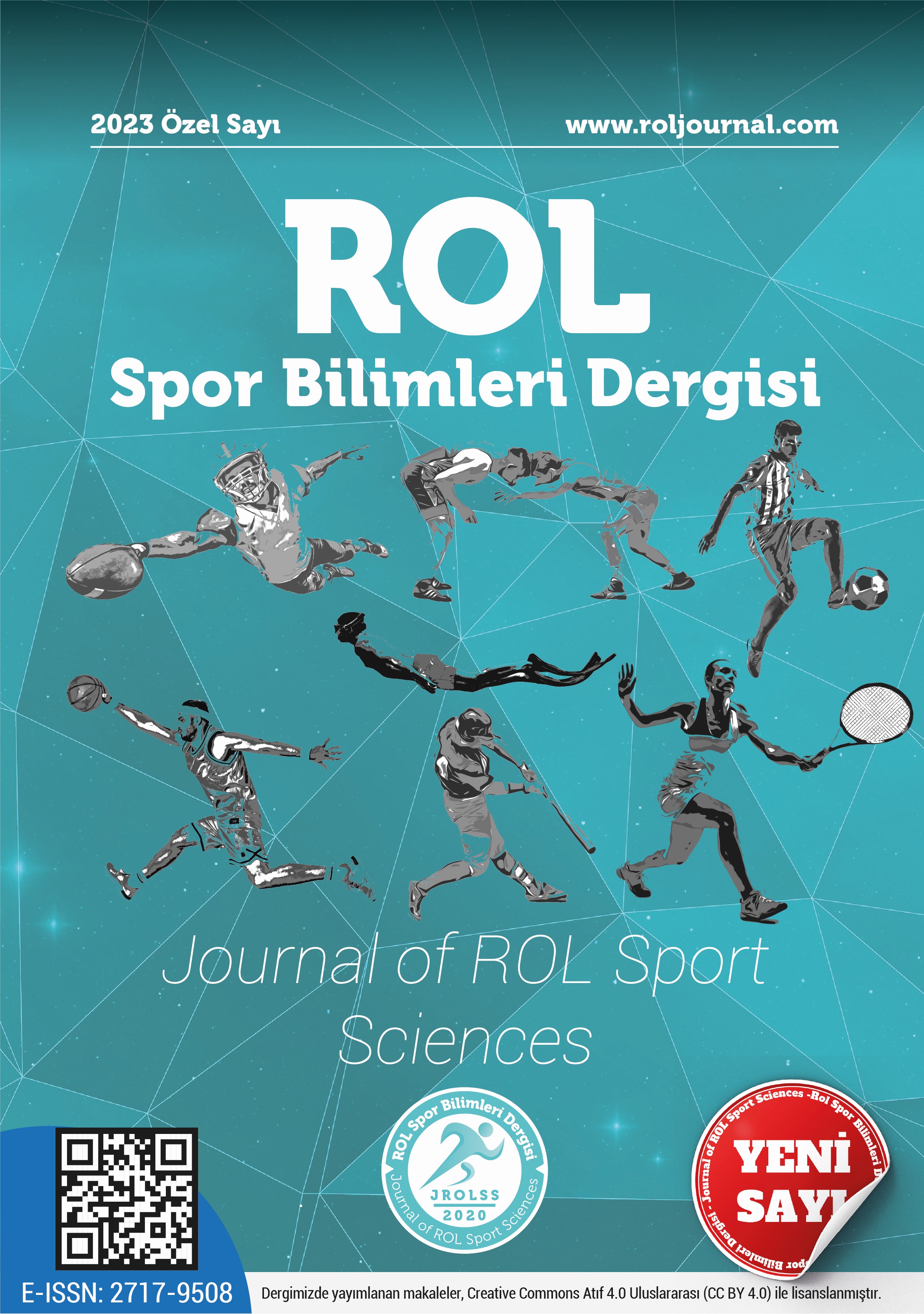Organizational innovation and creativity perception of public sports organization employees in Turkey
DOI:
https://doi.org/10.5281/zenodo.10045016Keywords:
Creativity, Innovation, Innovation ClimateAbstract
Globalization in today's business world brings different problems for every sector and every institution. The solution to these problems will only be possible by offering innovative and creative solutions. Self-development of innovative individuals will also take place through the support provided by their organizations. This situation makes it important to investigate whether there is an innovative and creative working climate provided by the organization in terms of innovation and creativity of the employees. This is also true for the employees of the Ministry of Youth and Sports of Turkey, which is the public institution and organization that directs the sports sector, which is one of the world's major economies, on a country basis. In this context, this study aims to examine the innovation and creativity perceptions of the employees of the central and provincial organizations of the Ministry of Youth and Sports. The study was designed according to the correlational survey model and causal-comparative research in quantitative research methods. The study group was determined according to the convenience sampling method, which is one of the non-random sampling methods. The working group comprised of 424 Ministry of Youth and Sports central and provincial employees. In the study, the “Innovation Climate Scale” was used as a data collection tool. In the analysis of the obtained data, parametric tests were used after the normality examination. As a result of the analyzes, it was determined that the innovativeness perceptions of the employees of the central and provincial organizations of the Ministry of Youth and Sports are above the average. In conclusion, it can be stated that the employees of the central and provincial organizations of the Ministry of Youth and Sports of Turkey work in an innovative and creative organizational environment.
References
Azar, G., & Ciabuschi, F. (2017). Organizational innovation, technological innovation, and export performance: The effects of innovation radicalness and extensiveness. International Business Review, 26(2), 324-336.
Büyüköztürk, Ş. (2017). Sosyal bilimler için veri analizi el kitabı. Pegem Akademi.
Cem, I., & Hajiyeva, T. (2018). Bireysel yenilikçilik ve algılanan örgütsel destek düzeyi ilişkisi: İstanbul otelleri örneği. Güncel Turizm Araştırmaları Dergisi, 2(2), 206-227.
Chuo, J., & Amponstira, F. (2023). The influence of organızational innovation climate on the innovation behavior of sports coaches in Chinese universities. Asia Pacific Journal of Religions and Cultures, 7(1), 100-114.
Damanpour, F. (2017). Organizational innovation. Oxford Research Encyclopedia of Business and Management.
Demir, A., Sertbaş, K., & Sivrikaya, K. (2020). Sporda inovasyon ölçeği’nin (SİÖ) Türkçeye uyarlama çalışması. Eurasian Research in Sport Science, 5(1), 16-25.
Fernandes R. A. M., Vasconcelos R. G. S., & Dobelin, S. (2018). Literature on organizational innovation: Past and future. Innovation & Management Review, 15(1), 2-19.
Field, A. (2009). Discovering statistics using SPSS (3. Ed.). Sage Publications.
Frosch, K. H. (2011). Workforce age and innovation: a literature survey. International Journal of Management Reviews, 13(4), 414-430.
Gijón, C., Albarrán Lozano, I., & Molina, J. M. (2023). Perception of innovation in Spain. Digital Policy, Regulation and Governance, 25(3), 185-205.
Gürbüz, S., & Şahin, F. (2018). Sosyal bilimlerde araştırma yöntemleri: Felsefe–yöntem–analiz. Seçkin Yayıncılık.
Hage, J. T. (1999). Organizational innovation and organizational change. Annual Review of Sociology, 25(1), 597-622.
Hayton, J. W. (2021). Facilitating disability sport and physical recreation during the initial months of COVID-19: examining organizational innovation in third sector organizations. Leisure Sciences, 1-23. https://doi.org/10.1080/01490400.2021.2023373
Kaçay, Z. (2020). Spor Genel Müdürlüğü personelinin yenilik konusunda örgütsel destek algılarının çeşitli değişkenler açısından incelenmesi. G. Hergüner, & A. S. Yücel, (Ed.) Spor ve sağlık bilimlere multidisipliner bakış. (ss. 350 – 369). Güven Plus Grup Yayınları.
Koca C. (2020) Sporda toplumsal cinsiyet eşitliği haritalama ve izleme çalışması 2018-2020 güncellemesi. Ceid Yayınları.
Kwaśniewska, J., & Nȩcka, E. (2004). Perception of the climate for creativity in the workplace: the role of the level in the organization and gender. Creativity and Innovation Management, 13(3), 187-196.
Marescotti, M. E., Demartini, E., Filippini, R., & Gaviglio, A. (2021). Smart farming in mountain areas: Investigating livestock farmers’ technophobia and technophilia and their perception of innovation. Journal of Rural Studies, (86), 463-472.
Mülhim, M. A., & Kul M., (2020). Beden eğitimi ve sporda yenilikçilik. H. Sunay, & E. Eyuboğlu, (Ed.) Sporun yönetimi ve psiko-sosyal boyutları. Lambert Academic Publishing.
Qstergaard, C. R., Timmermans, B., & Kristinsson, K. (2011). Does a different view create something new? The effect of employee diversity on innovation. Research Policy, 40(3), 500-509.
Razavi, S. H., & Attarnezhad, O. (2013). Management of organizational innovation. International Journal of Business and Social Science, 4(1), 226-232.
Sapprasert, K., & Clausen, T. H. (2012). Organizational innovation and its effects. Industrial and Corporate Change, 21(5), 1283-1305.
Scott, S. G., & Bruce, R. A. (1994). Determinants of innovative behavior: A path model of individual innovation in the workplace. Academy of Management Journal, 37(3), 580-607.
Sönmez, B., Bacaksiz, F. E., & Yıldırım A. (2017). Yenilik i̇klimi ölçeğinin Türkçe’ye uyarlanması: Geçerlik ve güvenirlik çalışması. Anadolu Hemşirelik ve Sağlık Bilimleri Dergisi, 20(2), 75-82.
Tams, S., & Dulipovici, A. (2022). The creativity model of age and innovation with IT: why older users are less innovative and what to do about it. European Journal of Information Systems, 1-28.
Tavsancıl, E. (2014). Tutumların ölçülmesi ve SPSS ile veri analizi. Nobel Yayıncılık.
Van der Vegt, G. S., & Janssen, O. (2003). Joint impact of interdependence and group diversity on innovation. Journal of Management, 29(5), 729-751.
Yıldız, N. O., Bostancı, T. G., & Kaçay, Z. (2022). Bir günlük iç mekan macera eğitim uygulamalarının yaratıcı kişilik özellikleri üzerine etkisi. Akdeniz Spor Bilimleri Dergisi, 5(2), 818-828.
Zhang, Y., Zheng, H., Lam, D., Fu, X. M., & Li, M. (2022). CEOs' marital status and corporate innovation. Journal of Product Innovation Management, 39(5), 686-716.
Downloads
Published
How to Cite
Issue
Section
License
Copyright (c) 2023 Journal of ROL Sport Sciences

This work is licensed under a Creative Commons Attribution 4.0 International License.



